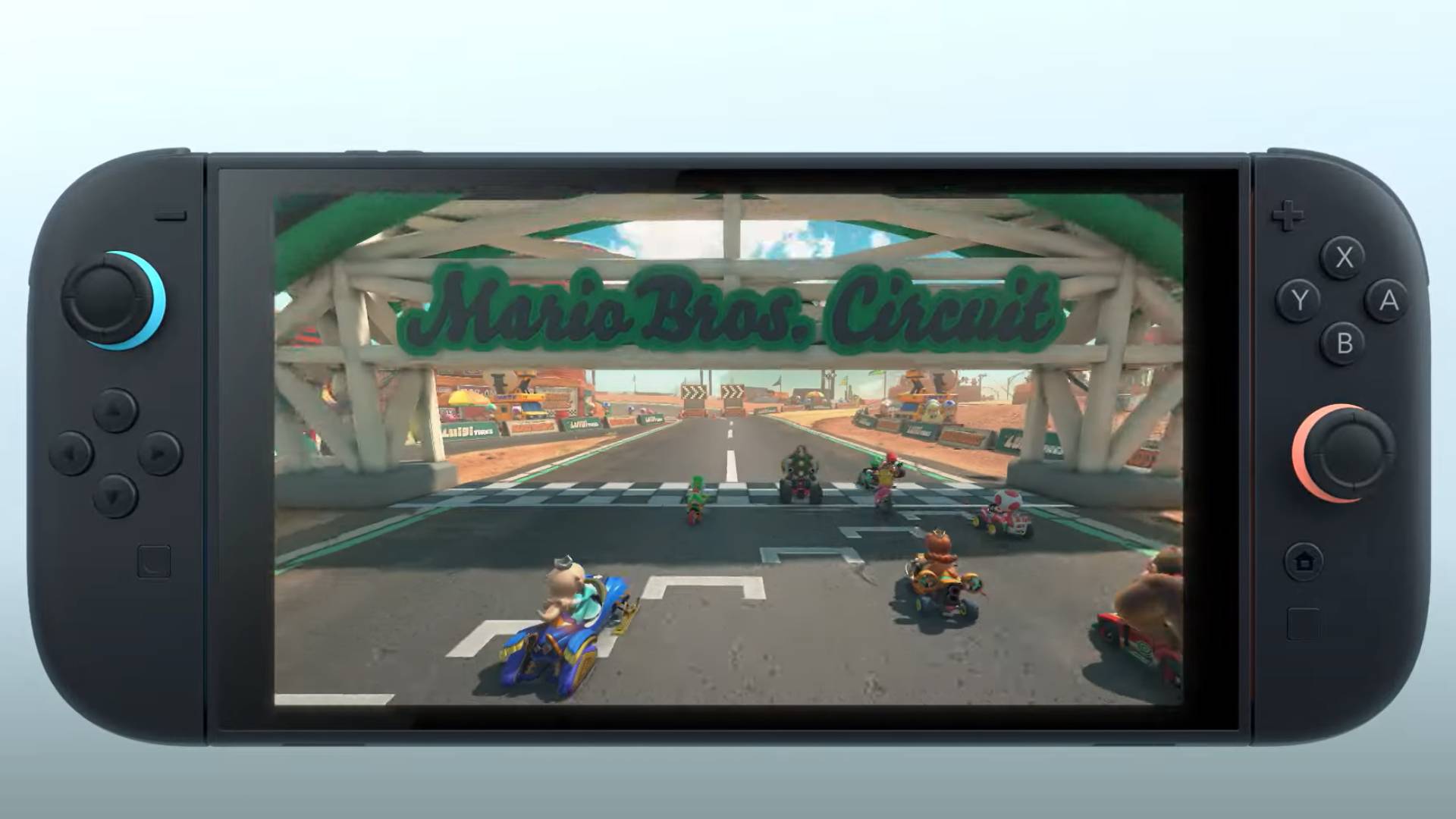Indie developer behind the last Wii U and 3DS games says Switch 2 Mario Kart textures are "extremely telling that this system is significantly more powerful" than the Switch
That brief glimpse of gameplay may have given away more than you'd think about the Switch 2's power

Nintendo may have given us less than three minutes of Nintendo Switch 2 goodness in its reveal trailer, but that's not stopped fans and developers alike from analyzing every last frame of it. One experienced developer who's worked on games for the Switch, Wii U, and 3DS is convinced that the Mario Kart gameplay footage shown off offers some big hints as to how powerful the new console is.
Jerrel Dulay is the solo indie developer behind Sungrand Studios and its unique game series Silver Falls, and is credited as being the last developer working on games to release on the Wii U and 3DS eShops (thanks, DualShockers). After racing to release multiple games on the Wii U and 3DS before their eShops shut down, not to mention his Nintendo Switch releases, it's fair to say he knows his stuff, making his analysis of what the apparent Mario Kart 9 footage shows compared to what we're used to on the regular Switch particularly interesting.
That includes things like the presence of "physically-based shaders," which can "take into account reflections from the environment" and generally give games more complex lighting. Although the original Switch required developers to "be very careful with the complexity of your shader," since a higher level of complexity means more demand placed on the system, Dulay believes "everything is physically based" in the new footage.
Similarly, he points out how high-resolution the ground textures are compared to the Switch's Mario Kart 8 Deluxe, which is notable as, since they take up so much space, "can consume your available RAM very quickly." While the Switch 1 only boasts around 4GB of RAM, Dulay says he "would not be surprised if the RAM for the Switch 2 was between 12 to 16 GBs because this is significantly more detailed."
The thing that Dulay thinks is the "most important" however is the presence of what he believes is "true volumetric lighting." This is an advanced lighting technique that can "create a sense of density in the atmosphere," making games appear both more realistic and more interesting. Think things like fog, clouds, and dustiness – Dulay says that this sort of effect was previously created on Mario Kart 8 Deluxe by utilizing "a basic distance fog" and a lot of bloom to apply "a soft halo" effect.
On the regular Switch, volumetric lighting would take "a huge bite out of performance," with Dulay suggesting that, at a 1080p resolution, it would probably "force your game to run at like 15 frames a second," just accounting for the lighting and nothing else. The developer speculates Nintendo would want Mario Kart 9 to run at 60fps, so the use of that lighting technique here would be a massive deal when you consider the power required.
There's also the fact that so many unique textures are present, which can be an issue on the original Switch since "they take up memory so fast that they will just crash your game." The fact that this doesn't appear to be a concern here is "extremely telling that this system is significantly more powerful," the developer explains.
Sign up to the GamesRadar+ Newsletter
Weekly digests, tales from the communities you love, and more
Dulay's whole video offers some fascinating insight into the system from a developer's perspective – hopefully Nintendo itself will be able to give us more details on its actual specs when the Switch 2 Direct rolls around in April.

I'm one of GamesRadar+'s news writers, who works alongside the rest of the news team to deliver cool gaming stories that we love. After spending more hours than I can count filling The University of Sheffield's student newspaper with Pokemon and indie game content, and picking up a degree in Journalism Studies, I started my career at GAMINGbible where I worked as a journalist for over a year and a half. I then became TechRadar Gaming's news writer, where I sourced stories and wrote about all sorts of intriguing topics. In my spare time, you're sure to find me on my Nintendo Switch or PS5 playing through story-driven RPGs like Xenoblade Chronicles and Persona 5 Royal, nuzlocking old Pokemon games, or going for a Victory Royale in Fortnite.



